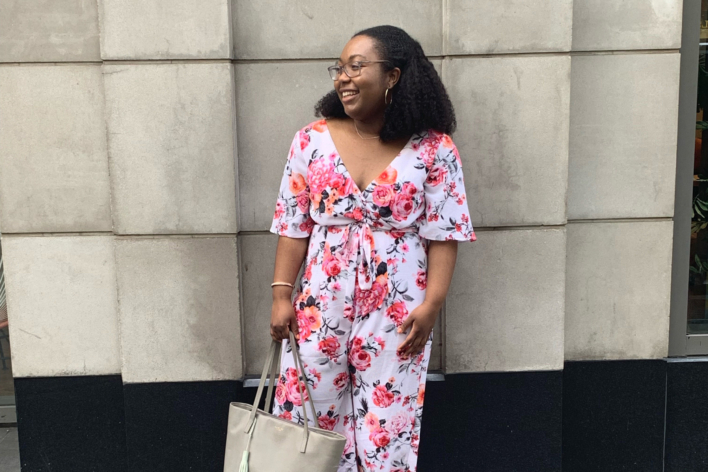
My name is Joy Roach, and I’m a first generation American with roots from the West Indies. My design strategy and career began with my studies of Strategic Design and Management at Parsons, where I focused on design thinking and human-centered design. After graduating, I spent 3 years consulting in strategy and design for affordable housing developers and non-profits nationwide. I took the next step in advancing my process at DSI, where I quickly learned the importance of developing community-centric traditions in my work. As I reflect back on the beginning stages of my journey, I’ve identified the meta themes of power, emergence, and complexity that continually surface through my approach.
Power: the capacity or ability to direct or influence the behavior of others or the course of events.
Power is a strong concept that has influenced the way I see my practice. In our first semester Fundamentals of Design course with Marc Rettig and Hanna DuPlessis, we broke down the intricacies of our life, until now, to understand what types of power we hold and the power structures held over us. Since, I’ve reflected on the fact that we all experience power as it arises from deeply rooted social structures, within the context of our individual communities. The awareness of where I come from, to the social class in which I reside, are the things that help me to relate, learn and help the communities around me in a unique way. I’ve also been able to explore what may happen beyond awareness by assessing where I’m taking space in various communities, and how I may continually impact the space. Learning about power in itself has been one of the undeniable factors of helping me to choose a thesis topic that exists in my own community. It’s important that as I learn a wealth of knowledge, I design with aligned communities, to restore the type of freedom that heals, restores and grows. For me, this includes helping people discover deeper connections in their faith journey, restoring the natural environment around us to thrive, and developing frameworks for emotional healing, awareness and liberty.
Emergence: The process of coming into view, or becoming exposed after being concealed.
The second half of this definition is where the depth lies. Being at DSI has taught me processes of uncovering what was always there. Many times the communities we work with have barriers that hinder the opportunity to uncover the gem of their surroundings. Yet, as we’re taught these skills, we’re positioned to help our neighboring societies uncover the gold they possess by working with them collaboratively. In my personal methodology, this is precisely my goal, not only to help communities advance, but to also pass along these tools and resources, to be adopted, adapted and contextualized for their own needs. Emergence in itself is disruptive, and gives way to the newness of what hasn’t been discovered yet, and that’s what I hope to depict in the future of my practice.
Complexity: the state or quality of being intricate or complicated. A factor involved in a complicated process or situation.
In my first semester, we had the privilege to research and synthesize large amounts of data. The trick with social design is that we can’t disperse the information as we’ve gained it; it needs to be broken down in a way that the communities we work with can understand and process the information quickly and effectively. Because of this, we’ve worked broadly and narrowly to prove through our own work that maps are not reality, and exist within the constraints they’re placed in. Taking the Mapping class at DSI helped me focus on developing creative ways of communicating data to others, with the understanding that maps are simply a tool to help the public visualize information. As complexity can sometimes be seen as a negative element, we begin to understand how it truly reflects throughout the aspect of our lives, how it teaches us to expect the unexpected, and how I continue to adopt the concept into my own work.
As the environment at DSI continues to aid the process of impacting communities and critiquing the world, I do the same through evaluating my own viewpoints. Looking forward, I’ve seen how valuable these themes are and how effectively they’ve transferred to the world outside of my sphere. As I continue developing my thesis and honing in on my craft, I wish to transfer this information to different communities to use themselves. This in itself helps us to watch our power, strike emergence and address the complexity of the social elements around us. This has become my personal purpose of learning at DSI, and I look forward to discovering where it will take me.
More related links
- "The Cross Bronx Expressway, through the lens of the communities who live alongside it" | Alejandra Saker (MFA DSI '24) Blog
- AAAAH Weekend 2025 l "We believe visibility is empowerment and connection is transformation" Blog
- Don Norman Design Award Winner 2025 - MFA DSI Alum Blog
- Climate Week's Marketplace of the Future Hires & Inspires DSI-ers Blog